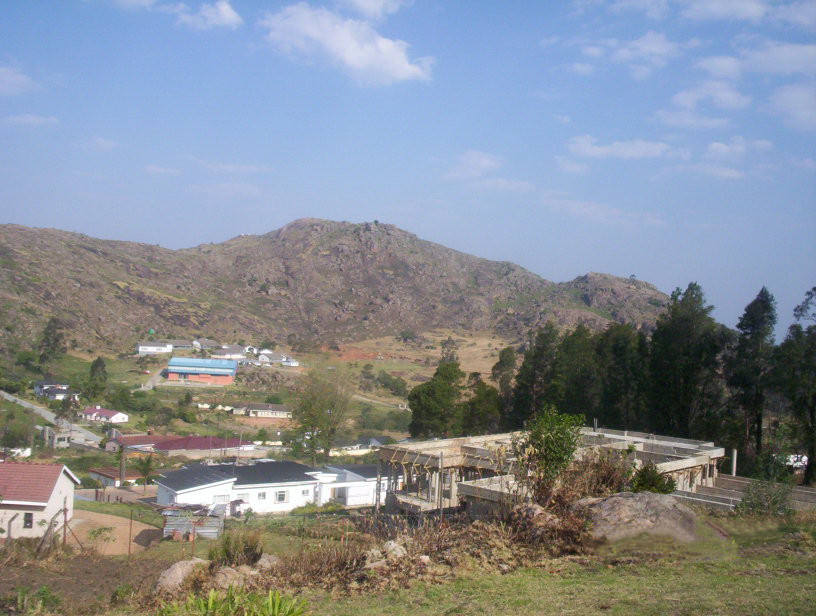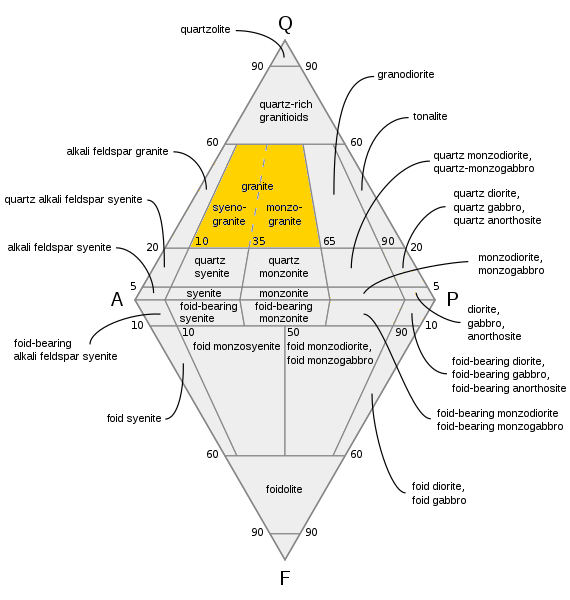|
Sibebe
Sibebe is a granite mountain in Eswatini, located 10 km from the capital city Mbabane. It is the second-largest monolith in the world and the largest exposed granite pluton,Sibebe Rock Swaziland Tourism website. Retrieved 2012-11-12. rising 350m above the valley of the Mbuluzi River. It is also known as 'Bald Rock'.Michael Bright (ed.), "1001 Natural Wonders: You Must See Before You Die" AFRICA: Sibebe, Swaziland Octopus Publishing (2010), . The Mbabane-Mbuluzi |
Sibebe Survivor
Sibebe Survivor is an annual hike in Mbuluzi, Eswatini, involving a climb to the top of Sibebe, the world's second largest single granite monolith. Initiated by the Rotary Club of Mbabane-Mbuluzi in July 2004, the Sibebe Survivor hike follows a course from Mbuluzi High School to the top of the rock and back. The number of participants has increased annually, with almost 3,300 climbers in 2011. Due to growing interest in the event, a website has been created for online registration to avoid long queues on registration day. People from all around the world are motivated to join in the annual climb of Sibebe Rock, which is always scheduled for the last Sunday in July. In 2012, the climb was even undertaken by an amputee using his wheelchair and crutches. In 2011, the event raised over 501 thousand Emalangeni (Swazi currency), equivalent to approximately 50,000 Euros. Participants are required to carry at least 1 litre of water, which is supplied at the start of the hike. The Rot ... [...More Info...] [...Related Items...] OR: [Wikipedia] [Google] [Baidu] |
Eswatini Beverages Ltd
Eswatini Beverages Ltd (EBL) was a subsidiary of SABMiller until 10 October 2016 when it was acquired by Anheuser-Busch InBev. It is a beverage and brewing company in Matsapha, Eswatini. The company was formed in 1995 by the merger of Eswatini Breweries, Ngwane Breweries, and Eswatini Bottlers. EBL produces and markets soft drinks, beer, and other alcoholic drinks. The Swazi beer produced is Sibebe Premium Lager named after the Sibebe rock, but other beers are brewed as well including Castle Lager. EBL dominates the beer market in Eswatini with a market share of 87%; in 2014 227 hl of lager beer Lager () is beer which has been brewed and conditioned at low temperature. Lagers can be pale, amber, or dark. Pale lager is the most widely consumed and commercially available style of beer. The term "lager" comes from the German for "storage ... were sold. Retooling in 2013 led to a temporary beer shortage in Eswatini. External links Eswatini Beverages Ltd official website Ref ... [...More Info...] [...Related Items...] OR: [Wikipedia] [Google] [Baidu] |
Swaziland
Eswatini ( ; ss, eSwatini ), officially the Kingdom of Eswatini and formerly named Swaziland ( ; officially renamed in 2018), is a landlocked country in Southern Africa. It is bordered by Mozambique to its northeast and South Africa to its north, west, south, and southeast. At no more than north to south and east to west, Eswatini is one of the smallest countries in Africa; despite this, its climate and topography are diverse, ranging from a cool and mountainous highveld to a hot and dry lowveld. The population is composed primarily of ethnic Swazis. The prevalent language is Swazi (''siSwati'' in native form). The Swazis established their kingdom in the mid-18th century under the leadership of Ngwane III. The country and the Swazi take their names from Mswati II, the 19th-century king under whose rule the country was expanded and unified; its boundaries were drawn up in 1881 in the midst of the Scramble for Africa. After the Second Boer War, the kingdom, under the name ... [...More Info...] [...Related Items...] OR: [Wikipedia] [Google] [Baidu] |
Monolith
A monolith is a geological feature consisting of a single massive stone or rock, such as some mountains. For instance, Savandurga mountain is a monolith mountain in India. Erosion usually exposes the geological formations, which are often made of very hard and solid igneous or metamorphic rock. Some monoliths are volcanic plugs, solidified lava filling the vent of an extinct volcano. In architecture, the term has considerable overlap with megalith, which is normally used for prehistory, and may be used in the contexts of rock-cut architecture that remains attached to solid rock, as in monolithic church, or for exceptionally large stones such as obelisks, statues, monolithic columns or large architraves, that may have been moved a considerable distance after quarrying. It may also be used of large glacial erratics moved by natural forces. The word derives, via the Latin , from the Ancient Greek word (), from () meaning "one" or "single" and () meaning "stone". Geologica ... [...More Info...] [...Related Items...] OR: [Wikipedia] [Google] [Baidu] |
Granite Monolith
Granite () is a coarse-grained (phaneritic) intrusive igneous rock composed mostly of quartz, alkali feldspar, and plagioclase. It forms from magma with a high content of silica and alkali metal oxides that slowly cools and solidifies underground. It is common in the continental crust of Earth, where it is found in igneous intrusions. These range in size from dikes only a few centimeters across to batholiths exposed over hundreds of square kilometers. Granite is typical of a larger family of ''granitic rocks'', or ''granitoids'', that are composed mostly of coarse-grained quartz and feldspars in varying proportions. These rocks are classified by the relative percentages of quartz, alkali feldspar, and plagioclase (the QAPF classification), with true granite representing granitic rocks rich in quartz and alkali feldspar. Most granitic rocks also contain mica or amphibole minerals, though a few (known as leucogranites) contain almost no dark minerals. Granite is nearly alwa ... [...More Info...] [...Related Items...] OR: [Wikipedia] [Google] [Baidu] |
Mbabane
Mbabane (; ss, ÉMbábáne, ) is a city in Eswatini (previously called Swaziland), and is one of the two capitals (along with Lobamba), serving as the executive capital. With an estimated population of 94,874 (2010), it is located on the Mbabane River and its tributary the Polinjane River in the Mdzimba Mountains. It is located in the Hhohho Region, of which it is also the capital. The average elevation of the city is 1,243 meters. It lies on the MR3 road. History The town grew after the nation's administrative centre moved from Bremersdorp (now called Manzini) in 1902. It derives its name from a chief, Mbabane Kunene, who lived in the area when British settlers arrived. Mbabane was founded in 1887 by Mickey Wells, on the spot where the Transvaal-to-Mozambique route crossed the Mbabane river. It was declared the capital of the new Protectorate of Swaziland in 1902. During this time, Mbabane consisted of a few shops, churches and schools founded by white settlers. Black A ... [...More Info...] [...Related Items...] OR: [Wikipedia] [Google] [Baidu] |
Granite
Granite () is a coarse-grained ( phaneritic) intrusive igneous rock composed mostly of quartz, alkali feldspar, and plagioclase. It forms from magma with a high content of silica and alkali metal oxides that slowly cools and solidifies underground. It is common in the continental crust of Earth, where it is found in igneous intrusions. These range in size from dikes only a few centimeters across to batholiths exposed over hundreds of square kilometers. Granite is typical of a larger family of ''granitic rocks'', or '' granitoids'', that are composed mostly of coarse-grained quartz and feldspars in varying proportions. These rocks are classified by the relative percentages of quartz, alkali feldspar, and plagioclase (the QAPF classification), with true granite representing granitic rocks rich in quartz and alkali feldspar. Most granitic rocks also contain mica or amphibole minerals, though a few (known as leucogranites) contain almost no dark minerals. Granite is near ... [...More Info...] [...Related Items...] OR: [Wikipedia] [Google] [Baidu] |
Pluton
In geology, an igneous intrusion (or intrusive body or simply intrusion) is a body of intrusive igneous rock that forms by crystallization of magma slowly cooling below the surface of the Earth. Intrusions have a wide variety of forms and compositions, illustrated by examples like the Palisades Sill of New York and New Jersey; the Henry Mountains of Utah; the Bushveld Igneous Complex of South Africa; Shiprock in New Mexico; the Ardnamurchan intrusion in Scotland; and the Sierra Nevada Batholith of California. Because the solid country rock into which magma intrudes is an excellent insulator, cooling of the magma is extremely slow, and intrusive igneous rock is coarse-grained ( phaneritic). Intrusive igneous rocks are classified separately from extrusive igneous rocks, generally on the basis of their mineral content. The relative amounts of quartz, alkali feldspar, plagioclase, and feldspathoid is particularly important in classifying intrusive igneous rocks. Intrusi ... [...More Info...] [...Related Items...] OR: [Wikipedia] [Google] [Baidu] |
Mbuluzi River
The Mbuluzi River (also known as the iMbuluzi or Umbeluzi) is one of the main rivers of Eswatini, and an important river in Mozambique. On the boundary of these countries, the Mbuluzi cuts through the Lebombo Range, before entering the Mozambican plain. It empties into the Estuário do Espírito Santo and then Maputo Bay at Maputo, and its waters pass under the Maputo–Katembe bridge, completed in 2018. The river has two sources, one in the highveld north of Mbabane, which is known as the Black Mbuluzi, and a second in the middleveld near Manzini, which is known as the White Mbuluzi, or ''imBuluzane''. The river passes through the northeastern lowveld of Eswatini, specifically traversing Hlane Royal National Park and Shewula Nature Reserve. In Eswatini, in the vicinity of the sugar plantations of Mhlume, the river is impounded by the Mnjoli Dam. In Mozambique it is known as the Umbeluzi, and is impounded there by the Pequenos Libombos Dam. The river is augmented by variou ... [...More Info...] [...Related Items...] OR: [Wikipedia] [Google] [Baidu] |
Rotary Club
Rotary International is one of the largest service organizations in the world. Its stated mission is to "provide service to others, promote integrity, and advance world understanding, goodwill, and peace through hefellowship of business, professional, and community leaders". It is a non-political and non-religious organization. Membership is by invitation and based on various social factors. There are over 46,000 member clubs worldwide, with a membership of 1.4 million individuals, known as Rotarians. History The first years of the Rotary Club The first Rotary Club was formed when attorney Paul P. Harris called together a meeting of three business acquaintances in downtown Chicago, United States, at Harris's friend Gustave Loehr's office in the Unity Building on Dearborn Street on February 23, 1905. In addition to Harris and Loehr (a mining engineer and freemason), Silvester Schiele (a coal merchant), and Hiram E. Shorey (a tailor) were the other two who attended this fi ... [...More Info...] [...Related Items...] OR: [Wikipedia] [Google] [Baidu] |
Lager
Lager () is beer which has been brewed and conditioned at low temperature. Lagers can be pale, amber, or dark. Pale lager is the most widely consumed and commercially available style of beer. The term "lager" comes from the German for "storage", as the beer was stored before drinking, traditionally in the same cool caves in which it was fermented. As well as maturation in cold storage, most lagers are distinguished by the use of '' Saccharomyces pastorianus'', a "bottom-fermenting" yeast that ferments at relatively cold temperatures. Etymology Until the 19th century, the German word ''Lagerbier'' ( de) referred to all types of bottom-fermented, cool-conditioned beer in normal strengths. In Germany today, it mainly refers to beers from southern Germany, either " Helles" (pale) or " Dunkel" (dark). Pilsner, a more heavily hopped pale lager, is most often known as "Pilsner", "Pilsener", or "Pils". Other lagers are Bock, Märzen, and Schwarzbier. In the United Kingdom, the ... [...More Info...] [...Related Items...] OR: [Wikipedia] [Google] [Baidu] |








